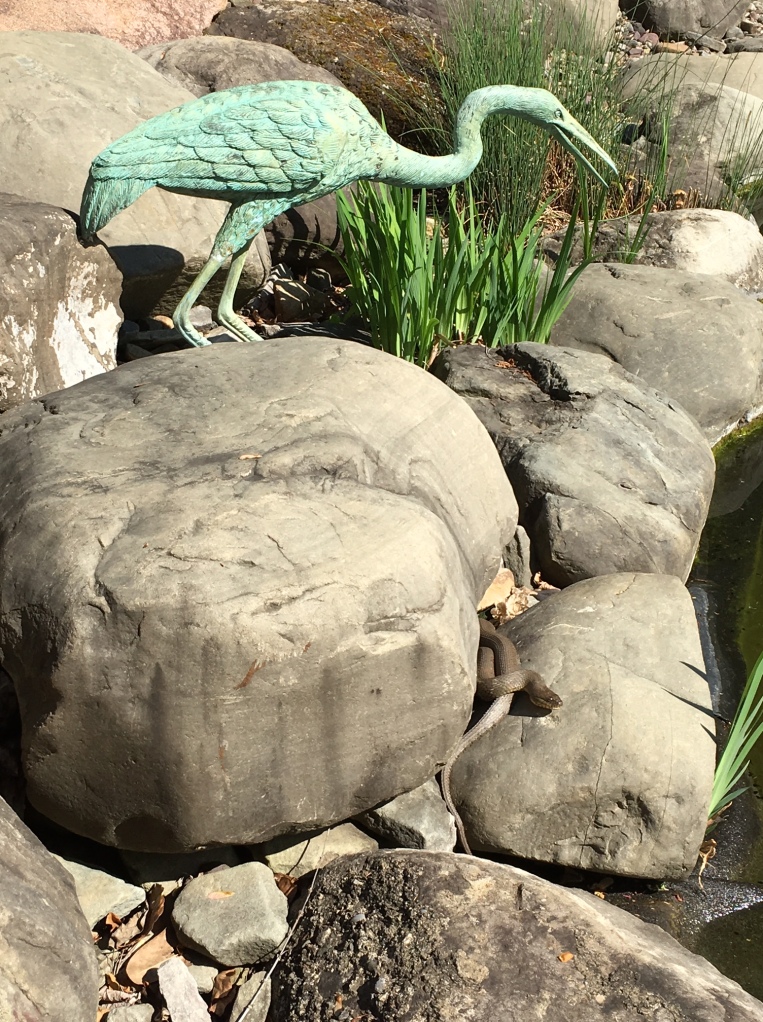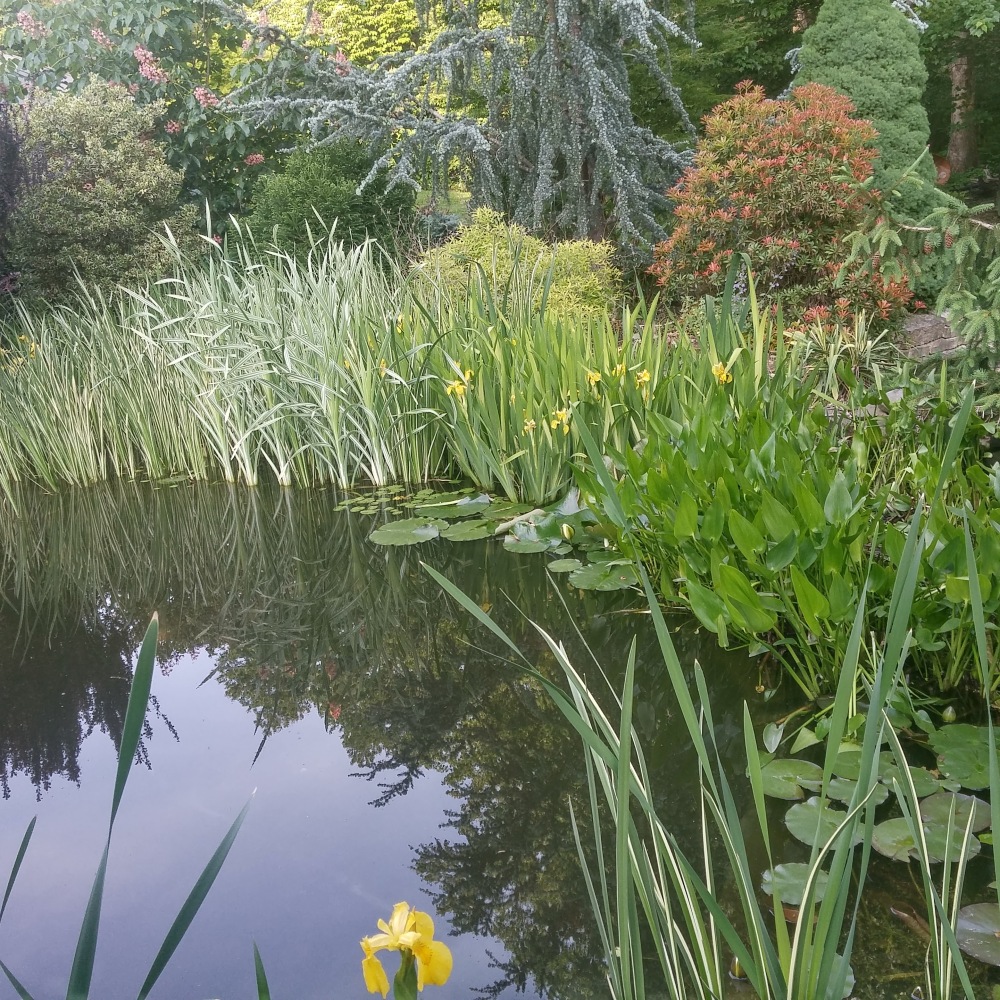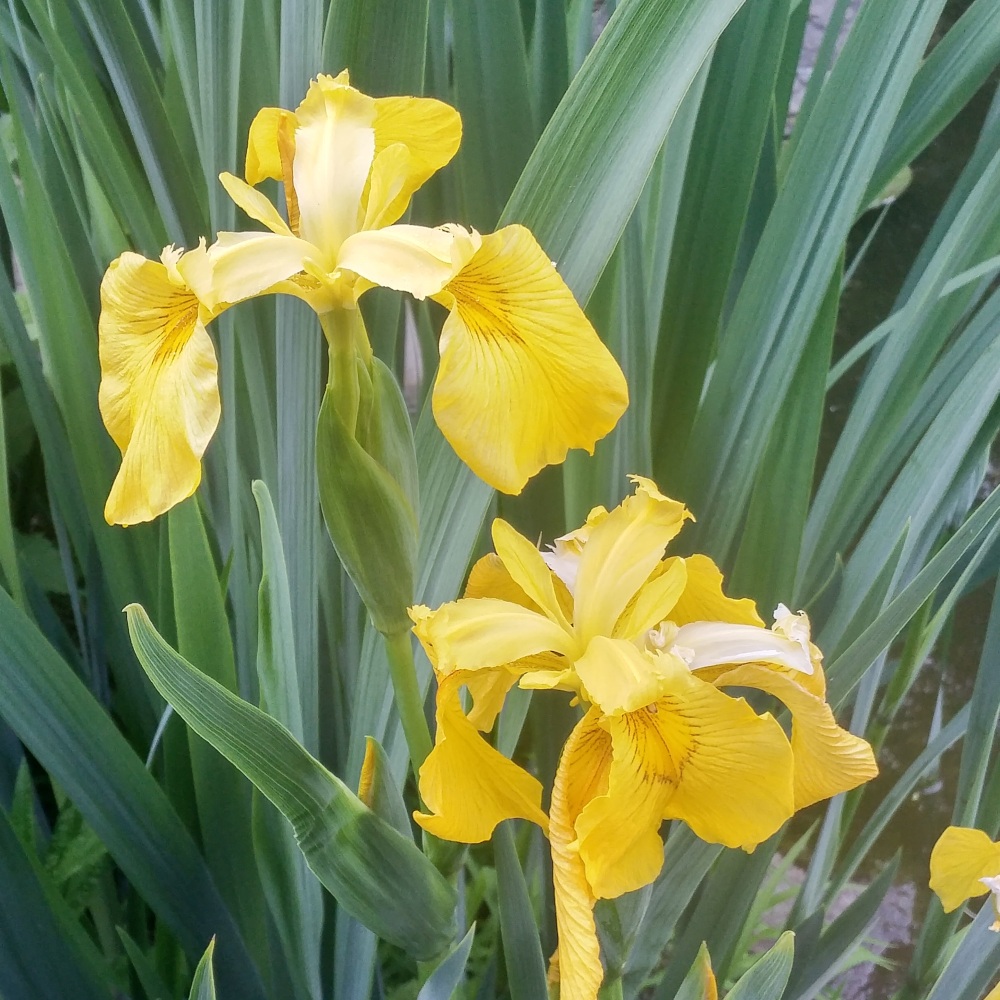The sun is shining after several chilly, rainy days, and the weather has turned for the better. In the cool morning, deer and rabbits were seen at the edges of the garden. The koi pond is home to a variety of creatures, but until this afternoon I was unaware that there are now at least three turtles, and three or more Northern Brown water snakes. With a warming sun, all have come out to play.
In recent weeks I’ve plugged crevices between boulders that line the pond in hopes that the single snake would give up and possibly relocate to one of the neighboring wetlands. This was, of course, before others were seen this afternoon, and now I’m losing hope that I can discourage this growing family. The snakes are more a nuisance than a danger, though my wife disagrees.
In the short video, one of the smaller snakes moves across the pond, and then into the Pickerel weed, sweetflag, and yellow flag irises of the pond’s filtration area (below). The snake can be seen reacting to one of the large koi, but koi and the pond’s few large goldfish are not bothered at all by the snake’s presence. 
The filtration area has become a dense thicket, and yellow flag iris (Iris pseudoacorus, below) is invasive if allowed to escape, so I carefully monitor the overflow of the pond. In the koi pond the iris seeds into every damp nook and cranny, so it must be chopped out on occasion so that it does not overwhelm vigorous, but less aggressive Japanese irises (Iris ensata). In the gravel filled filtration area, Pickerel weed threatens the invasive yellow flowered iris, and I would not be terribly disappointed to see it disappear one day.
I love your pictures! Maybe you can help me. My pachysandra has a disease. The leaves are turning gray and are covered with webs????
The presence of webs indicates spider mites. I don’t favor spraying insecticides unless there is no other option, but mite damage will only get worse through the summer.
The last time I saw snakes in my pond, I got my grabber…sneaked up on him and put him in a prepared bucket of pond water…and carried him to a pond in our nearby state park. I had to do this twice. The mate was smart and watched for me….but I finally got it sunning in the horsetail. Neither were hurt this way and now making more snakes in their new home. Haven’t seen any since. Love your work.
With at least three snakes, and a wife who militantly objects to them, I’ll have to do something, but with deep water and dense vegetation this is a challenge.
Is the snake in your video moving across the pond a water snake? Looks a lot like one I pulled out of my pool. We did not want to destroy it if it was not poisonous, so we let it go elsewhere.
Last year, my wife identified our snakes from their markings as Northern Brown water snakes. Not poisonous, but that largest is over six feet long, and I’ve seen that they get very defensive when you step beside the rock they’re hiding under.
Wish the snakes on our property went for the fish instead of the frog babies!! We stopped using chems several years ago as the frogs and toads began disappearing ☹️. Regardless of that the fish multiply like crazy! We have a variety of grass snakes as well as black snakes. A nearby property has cottonmouths so we are thankful for the territorial black snakes…especially since they control the mouse and vole populations. Just wish they ate fishies! Your photos are inspirational. Thanks for keeping up this page
Is the yellow flag iris native to Virginia? I saw it last week on the banks of the pond in our neighborhood. Just wondering if it grew there on its own or if somebody planted it there.
Blue flag iris (Iris versicolor) is native, but not yellow flag. It was either planted, or seeds were brought in by birds or water flowing into the pond. Once established, it’s hard to get rid of it. I planted it long before I had any idea it was invasive (before this information was widely available on the internet), and since I have a lengthy buffer I’m able to watch that it doesn’t escape.